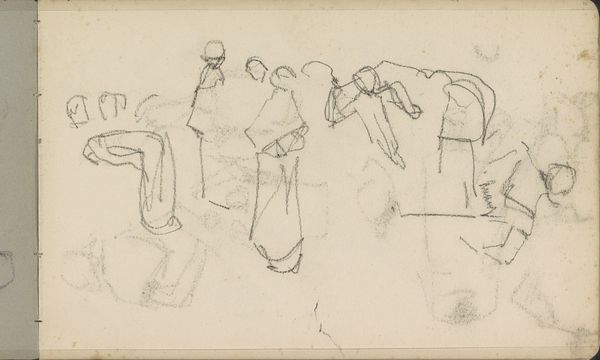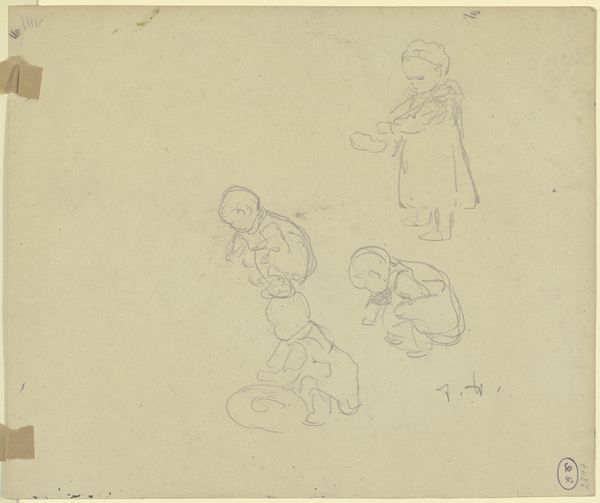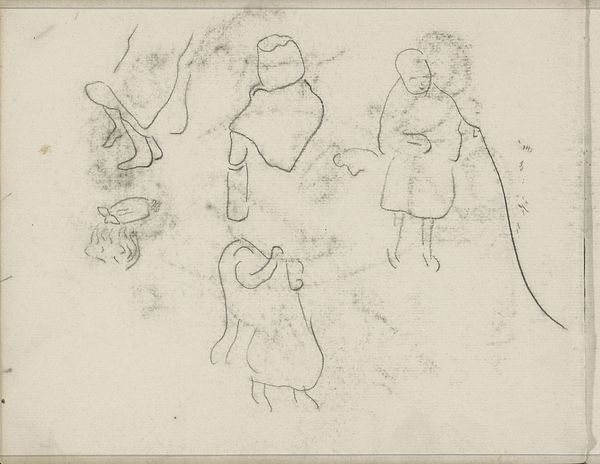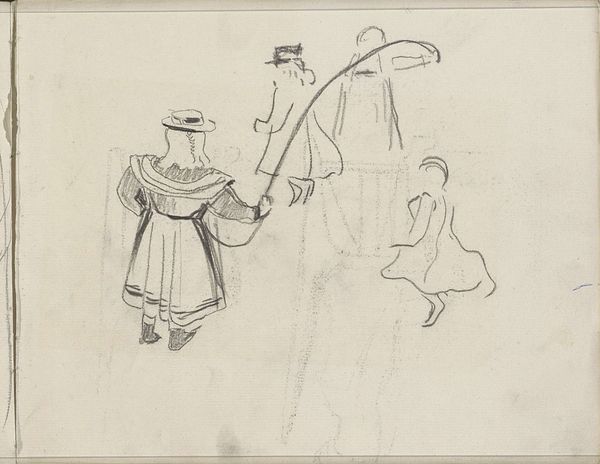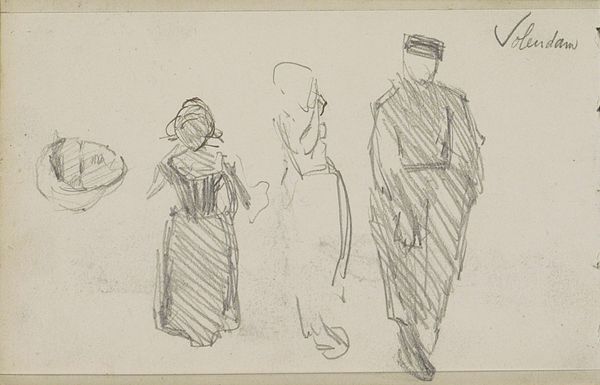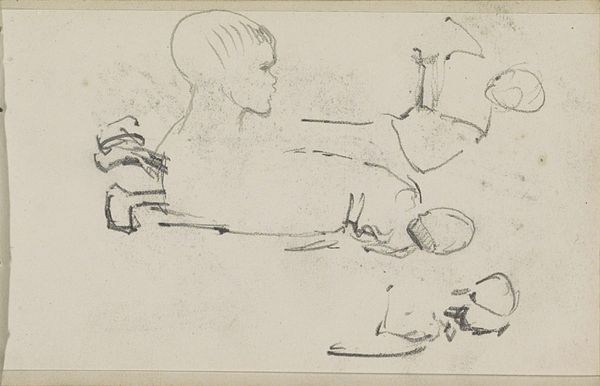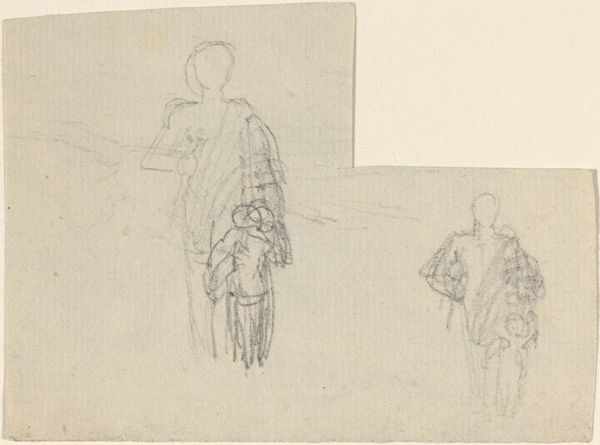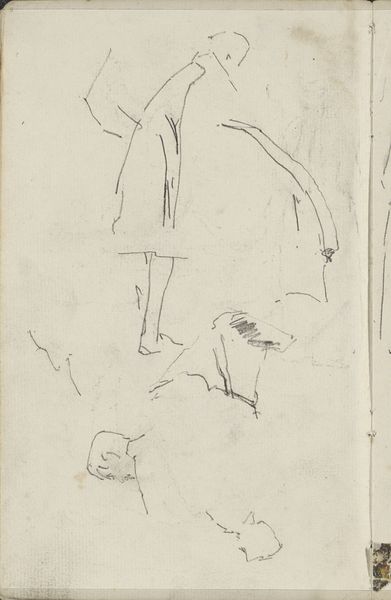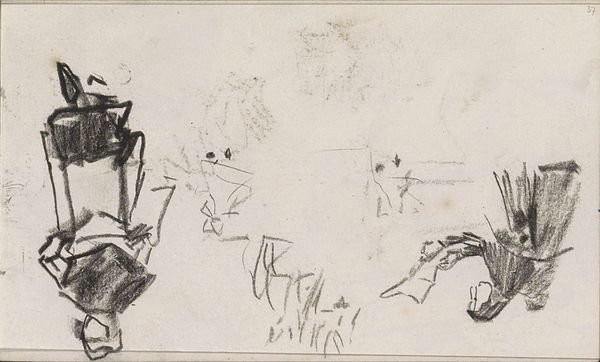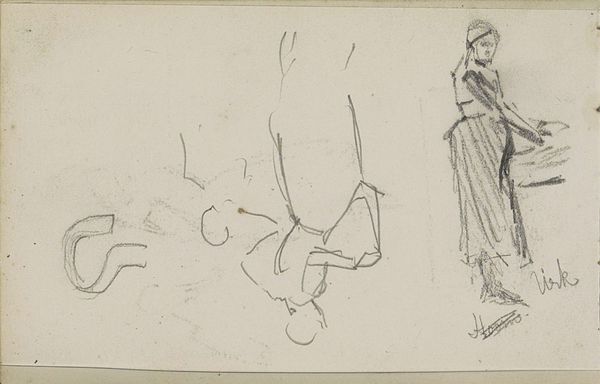
drawing, pencil
#
portrait
#
drawing
#
amateur sketch
#
light pencil work
#
incomplete sketchy
#
figuration
#
personal sketchbook
#
idea generation sketch
#
sketchwork
#
pencil
#
sketchbook drawing
#
genre-painting
#
storyboard and sketchbook work
#
sketchbook art
#
realism
#
initial sketch
Copyright: Rijks Museum: Open Domain
Curator: Let’s turn our attention to “Drie Volendamse vrouwen,” or “Three Volendam Women,” a pencil drawing from 1875 by George Clausen. What's your initial take? Editor: My first impression is one of understated grace. The simple, flowing lines create an image that, though incomplete, evokes a profound sense of everyday life. It feels remarkably intimate, like stumbling upon a private moment. Curator: Clausen, despite his British background, frequently visited the Netherlands. He was clearly fascinated by the traditional dress and customs, especially of communities like Volendam, and their social structures. This sketch likely served as studies for a larger painting or illustration, documenting the regional dress and character. Editor: The way the composition leads the eye around the image, each figure possessing a different pose, allows for visual play. How the formal elements are structured creates visual harmony despite its minimalist qualities. What stands out to you about its history and intended audience? Curator: It’s a window into a specific time and place, capturing a quickly modernizing culture. Artists from across Europe were drawn to these "untouched" communities, idealizing their simple way of life. Clausen himself later shifted away from depictions of rural life, focusing on the modern realities of agricultural labor and its socio-economic landscape. The intended audience, therefore, reflects these notions of rustic utopias while perhaps revealing the slow march towards modernization. Editor: Indeed. Looking at how he renders each figure's attire provides more than just contextual information about how to perceive the image. Note also that the light pencil work seems deliberate. Are you interpreting something similar in light of the socio-historical context of such practices? Curator: I agree, I think the sketchy quality adds to its ethnographic value as a form of visual note-taking. It also represents a critical practice to better understand these communities on the road to development. In fact, sketching was seen as the fastest method to capture quickly eroding local habits. Editor: It truly bridges the gap between the observer and observed, revealing the raw essence of artistic and social engagement with remarkable economy. I shall now see the work beyond just structural qualities!
Comments
No comments
Be the first to comment and join the conversation on the ultimate creative platform.
